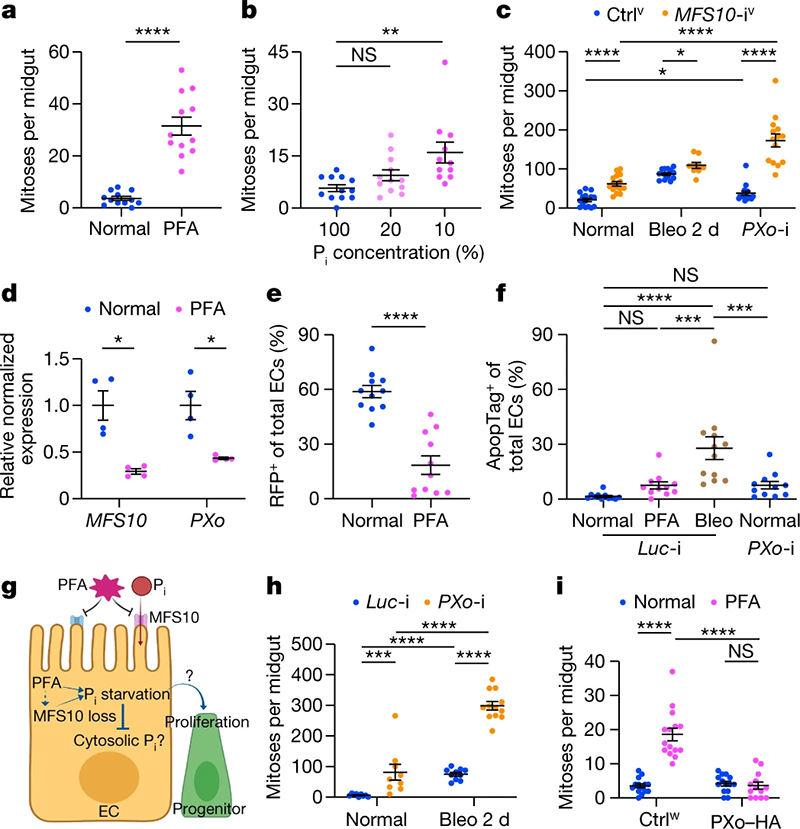
 中央研究院 生物化學研究所
中央研究院 生物化學研究所
Inorganic phosphate (Pi) is one of the essential molecules for life. However, little is known about intracellular Pi metabolism and signalling in animal tissues1. Following the observation that chronic Pi starvation causes hyperproliferation in the digestive epithelium of Drosophila melanogaster, we determined that Pi starvation triggers the downregulation of the Pi transporter PXo. In line with Pi starvation, PXo deficiency caused midgut hyperproliferation. Interestingly, immunostaining and ultrastructural analyses showed that PXo specifically marks non-canonical multilamellar organelles (PXo bodies). Further, by Pi imaging with a Förster resonance energy transfer (FRET)-based Pi sensor2, we found that PXo restricts cytosolic Pi levels. PXo bodies require PXo for biogenesis and undergo degradation following Pi starvation. Proteomic and lipidomic characterization of PXo bodies unveiled their distinct feature as an intracellular Pi reserve. Therefore, Pi starvation triggers PXo downregulation and PXo body degradation as a compensatory mechanism to increase cytosolic Pi. Finally, we identified connector of kinase to AP-1 (Cka), a component of the STRIPAK complex and JNK signalling3, as the mediator of PXo knockdown- or Pi starvation-induced hyperproliferation. Altogether, our study uncovers PXo bodies as a critical regulator of cytosolic Pi levels and identifies a Pi-dependent PXo-Cka-JNK signalling cascade controlling tissue homeostasis.
